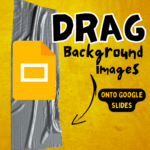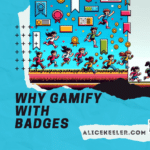
Are your students cheating on math problems by using apps like PhotoMath, Mathway, or other websites on their phones? This can be frustrating since it may be hard to determine what students actually know versus what they were able to solve with the assistance of their phones. Fight Photomath with Graspable Math. Alice Keeler, math teacher and EdTech expert, will share with you the unique ways to use the tool, Graspable Math, to help students to develop procedural fluency. Make Graspable Math a part of your math classroom!
View Recording on OTIS
Fight Photomath with Graspable Math
What is Graspable Math? Graspable Math is an innovative approach to learning math that utilizes tangible expressions and intuitive gestures to make the subject more engaging and accessible for students.
Graspable Math is FREE!
Value Multiple Approaches
It is important for students to not feel there is only one way to solve a problem. What are alternative ways to solve a math problem and why do they work? This shift in the question away from “Show your work” and “Get the answer” help you to fight Photomath. Students need to use reason and demonstrate understanding. Graspable Math makes this possible.

What is Graspable Math?
Graspable Math helps students with procedural fluency. It is a math platform that allows students to engage beautifully in algebraic problem-solving. A digital platform to integrate math symbols, handwriting, images, as well as GeoGebra integration. Graspable Math helps students to explore patterns, find alternative ways to solve equations, reduce anxiety over arithmetic mistakes, engage in mathematical discussions, and
Almost every student I know will use Photomath or something like it to find the answers to their homework. It is frustrating because what did they learn from that? Probably nothing. The only way to fight PhotoMath and avoid playing whack a mole is to change the task. Graspable Math takes a more modern approach to learning mathematics.
From the Graspable Math About Page
Math is beautiful and tremendously powerful in the hands of experts. On the other hand, to novices, math is frustrating and HARD….All those rules to memorize. All those steps to write and keep track of.
In a world where technology has advanced at astonishing rates, the technology of math notation hasn’t really changed in 400 years. The easiest way to write and solve an equation is still by hand, on paper.
For a few years, a group of us—math educators, psychologists, mathematicians, and computer scientists—have been imagining ways to reconstruct the idea of formal notation by using digital technology. We think it’s time to apply modern design approaches to build more intuitive and fluid interfaces for math. We want tools that scaffold experiences of algebraic structure, supports genuine inquiry about how math works, and gives people opportunities to reason flexibly about mathematics.
Integrates with Google Classroom
Graspable Math activities are easy to share with students. You can provide them with a link to the activity and they can share a link back to you with their work. Graspable Math also provides the option to assign to Google Classroom where it automatically creates a copy per student of the activity.
A Few Sample Activities

Graspable Math and GeoGebra
A cool feature of Graspable Math is it works with GeoGebra. It can be embedded into GeoGebra applets. Additionally, GeoGebra can integrate Graspable Math. Notice in this Open Middle example, placed in Graspable Math, it has a GeoGebra graph connected to it.

Tim Brzezinski the Master
Be sure to follow Tim Brzezinski











